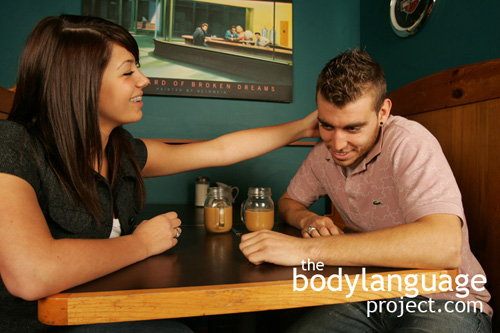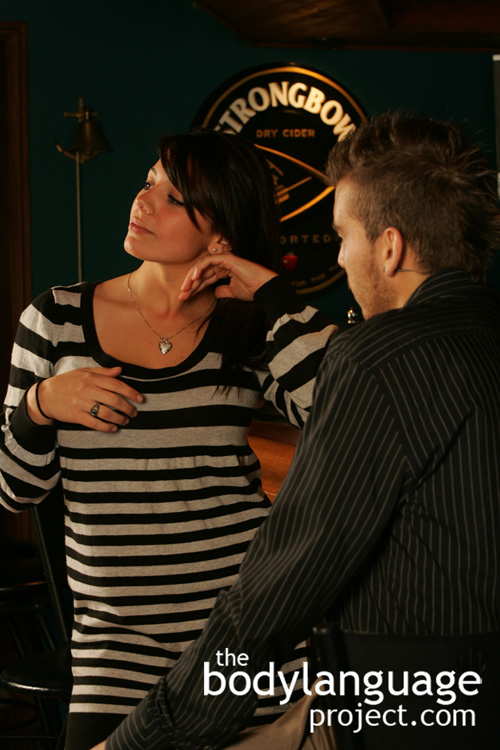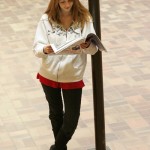
A woman grooming a man is a good sign that she’s trying to keep him looking good for her own benefit.
Grooming includes smoothing clothing, rearranging attire, rubbing the hands, glancing in a mirror and, applying lipstick, fixing the hair amongst many others. While not a grooming gesture per se, women can also provocatively leave buttons unbuttoned, especially a button-up blouse in effort to peek men’s curiousity. These are all signals of interest within the proper context. We all, men included, groom and preen ourselves in order to appear more presentable and attractive to others. The more concerned we are with our looks, the more it indicates our desire to show off and attract and the timing with which this happens is extremely important because it indicates to us the purpose of the adjustments and whom the fixes are meant for. For example, if a woman appears relaxed in her attire, perhaps wearing comfortable jeans and a sloppy sweat shirt rather than something more “put together”, and stumbles upon someone she feels is attractive, she might begin to panic and hyper groom in effort to minimize whatever damage she figures she has caused to her image. Grooming tells us that she feels his opinion matters which is no different from men. Men will smooth out ties or a shirt, button up a jacket to appear more formal, smooth out their pants or fix their hair.
Grooming gestures become particularly powerful delivered with eye contact too, not just with respect to proximity and visibility. Eye contact for example is an “anchor” for sexual signals as it hooks the signal to a particular target. Grooming absent of a target and hence eye contact, might mean, either, the desire to attract in general as we saw in the “parade” where women are just acting like magnets to see what sticks, or else a superficial desire to appear put together for it’s own sake. Grooming and preening can also be done on other people to indicate interest. A woman might pluck some imaginary lint from a man’s clothing that she fancies, while another she detests might go an entire evening with food stuck to the side of his face. She might also fix a man’s hair, straighten and adjust clothing or rub his back, all methods of showing interest. The touching and proximity that comes as a result of grooming is not just incidental, it’s the driving force. Touching is a strong indicator of interest especially when initiated by a woman.
Above: Preening gestures indicate that a woman is preparing herself for someone else to touch her but when a woman plucks some imaginary lint from a man’s clothing she’s probably interested. She might also fix a man’s hair, straighten and adjust clothing or rub a man’s back to show interest. Back touching, scratching and massaging is an evolutionary throwback when we used to have totally hairy bodies and removing tics would have been a major hygienic necessity. It’s where “you scratch my back and I’ll scratch yours” came from. Regardless, touching and close proximity when done by a woman to a man, can be taken as a strong sign of sexual interest. Learn how to build a proper foundation for dating and attraction by reading the Ebook Body Language Project: Dating, Attraction and Sexual Body Language!













